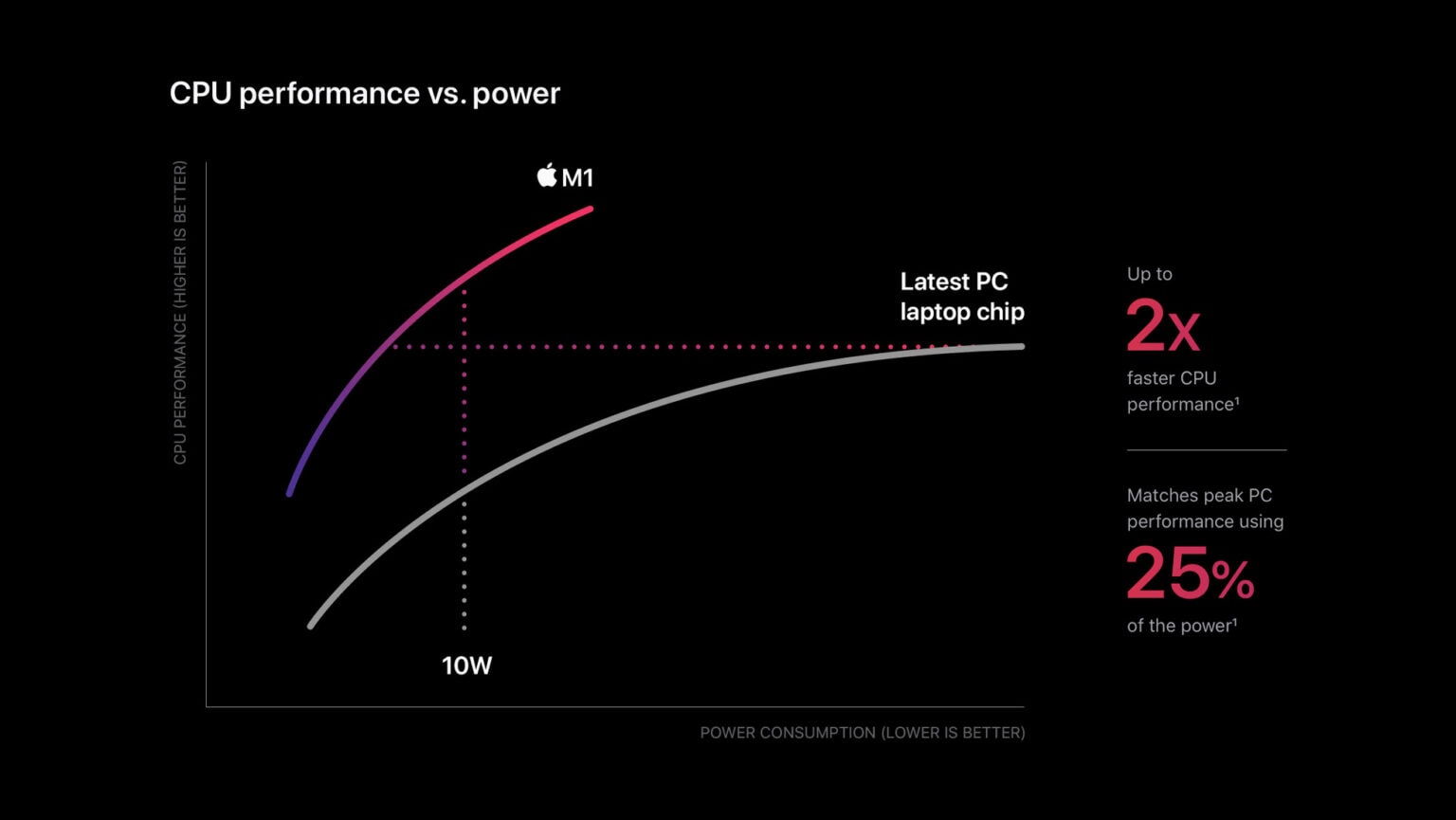Apple improved its processors’ performance by a massive 3x in the past five years, according to analysis carried out by AnandTech. Meanwhile, Intel’s best single-thread performance only improved 28% during that same time frame.
The stats help cement why the risky jump from Intel to Apple Silicon in Macs makes a whole lot of sense.
The report, which compared the Apple A9 chip of 2015 to the current A14, notes:
“Apple’s performance trajectory and unquestioned execution over these years is what has made Apple Silicon a reality today. Anybody looking at the absurdness of [the graph showing the comparison] will realise that there simply was no other choice but for Apple to ditch Intel and x86 in favour of their own in-house microarchitecture – staying par for the course would have meant stagnation and worse consumer products.”
Apple Silicon could be massive for Apple
The post, written before Apple’s Mac-focused event Tuesday, lays out what the author, Andrei Frumusanu, thinks could be the “bare minimum of what Apple could achieve with their new Apple Silicon Mac chips.” It’s worth checking out in full for a deep dive into the performance trajectory of Apple’s chips.
Based on the existing A14 chips found in the new iPad Air 4 and iPhone 12 handsets, it shows off extremely competitive scores that, the author writes, compete “with the very best top-performance designs that the x86 vendors have on the market today.”
Intel's Moore's law vs Apple's Moore's Lawhttps://t.co/DpdGwldY4l pic.twitter.com/WfH8i5EC5u
— José Luis Ricón Fernández de la Puente (@ArtirKel) November 10, 2020
Apple has been designing its own mobile chips since the A4 debuted with the iPhone 4 a decade ago. But it’s only with the new M1 chip that powers the latest Macs that Apple created its own desktop chip. That’s still a new area for Apple — and, as my colleague Ed Hardy writes, it’s one of the biggest risks Apple has run in a long time. However, the upside is clearly there. Based on this report, there’s no reason to fear that Apple Silicon won’t scale to “desktop workloads.”
Bringing yet another part of the hardware development process in-house will give Apple an even greater capacity to optimize its computers. As Alan Kay, the legendary Xerox PARC designer who later became an Apple Fellow, said: The company serious about software should build its own hardware. And, maybe to add to Kay’s statement, the company serious about hardware and software should build its own chips, too.
Moore’s law? More like “more’s law,” amirite?
Source: AnandTech


